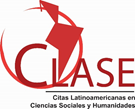Rhetorical structures in abstracts of scientific papers published in Ecuadorian and American-medium contexts
Resumen
The community of national and international academic discourses has put emphasis on abstracts of scientific articles (RAC), because they are an important part in all disciplines and languages. In fact, summaries attract readers and increase indexing and citation opportunities. On the other hand, they determine the importance of the articles and classify them as good or ambiguous. The present study examines the rhetorical structures of abstracts in scientific articles written in English by native and non-native speakers. The abstracts were selected from Ecuadorian and North American magazines, published in 2010-2016. The research adopts the model of rhetorical structure of Hyland (2000), such as: introduction, purpose, method, product and conclusion. The analysis is based on a corpus of eighty summaries of humanities and sciences. The results reveal rhetorical variations in their construction in four disciplines: education, sociology, electronics and agronomy. However, the texts written in English by natives and non-natives followed a hierarchical structure of five movements, with three stable rhetorical structures: purpose, method and product. The results of the research affirm that academic writing must be well organized in terms of content and structure; in such a way that readers have a clear and concrete idea of the document. In addition, it throws pedagogical and linguistic implications for experts and inexperienced writers, especially for those with different linguistic and cultural backgrounds.
Keywords:
Abstracts, academic writing, genre analysis, rhetorical structure.
RESUMEN
La comunidad de discursos académicos nacionales como internacionales ha puesto énfasis en los resúmenes de artículos científicos (RAC), debido a que son una parte importante en todas las disciplinas e idiomas. De hecho, los resúmenes atraen a los lectores y aumentan las oportunidades de indexación y citación. Por otro lado, determinan la importancia de los artículos y los clasifican como buenos o ambiguos. El presente estudio examina las estructuras retóricas de los resúmenes en artículos científicos escritos en inglés por hablantes nativos y no nativos. Los resúmenes fueron seleccionados de revistas ecuatorianas y estadounidenses, publicados en el 2010-2016. La investigación adopta el modelo de estructura retórica de Hyland (2000), como: introducción, propósito, método, producto y conclusión. El análisis se basa en un corpus de ochenta resúmenes de humanidades y ciencias. Los resultados revelan variaciones retóricas en la construcción de los mismos en cuatro disciplinas: educación, sociología, electrónica y agronomía. Sin embargo, los textos escritos en inglés por nativos y no nativos siguieron una estructura jerárquica de cinco movimientos, con tres estructuras retóricas estables: propósito, método, producto. Los resultados de la investigación afirman que la redacción académica debe estar bien organizada en términos de contenido y estructura; de tal manera que los lectores tengan una idea clara y concreta del documento. Además, arroja implicaciones pedagógicas y lingüísticas para escritores expertos y sin experiencia, especialmente para aquellos con diferente formación lingüística y cultural.Palabras clave:
Resúmenes, escritura académica, análisis de género, estructura retórica.Descargas
Publicado
Cómo citar
Número
Sección
Licencia
La editorial "Universo Sur", de la Universidad de Cienfuegos, publica el contenido de la Revista "Universidad y Sociedad" bajo una Licencia Creative Commons Atribución-NoComercial-SinDerivar 4.0 Internacional.
© Podrá reproducirse, de forma parcial o total, el contenido de esta publicación, siempre que se haga de forma literal y se mencione la fuente.










